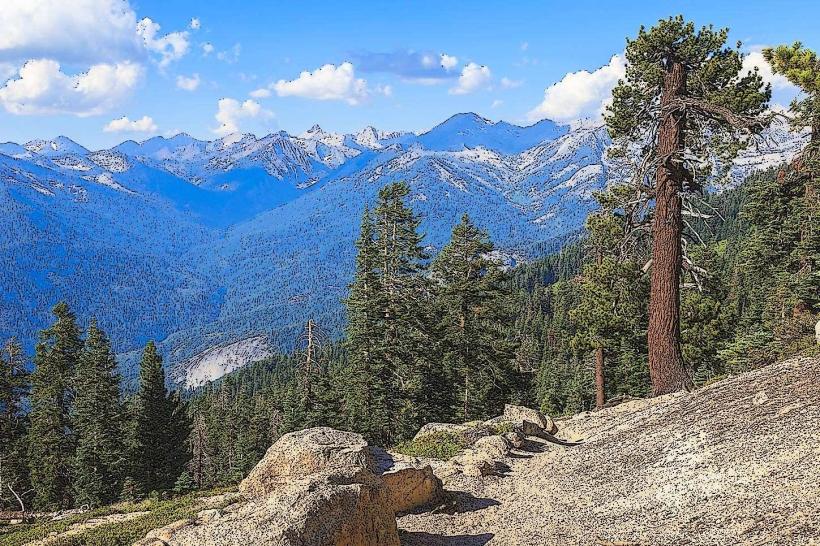Information
Landmark: Besh-Ba-Gowah Archaeological ParkCity: Globe
Country: USA Arizona
Continent: North America
Besh-Ba-Gowah Archaeological Park, Globe, USA Arizona, North America
Overview
In Globe, Arizona, Besh-Ba-Gowah Archaeological Park preserves one of the most remarkable remnants of the Salado culture, a society that flourished across the Southwest from around AD 1225 to 1450, leaving behind weathered stone walls and ancient artifacts, on top of that perched on a broad ridge above Pinal Creek, the site offered commanding views and easy reach to fresh water-an essential lifeline for the settlement.“Besh-Ba-Gowah” comes from an Apache phrase meaning “locale of Metal,” a nod to the area’s long history of mining and metalwork-work that rang with hammers centuries ago and linked Native peoples to the settlers who followed.The archaeological park holds the ruins of a sprawling pueblo, once made up of roughly 200 rooms grouped in tight clusters, their stone walls still warm in the afternoon sun, not only that the rooms were built mostly from rough granite cobbles packed tight with clay mortar, a technique typical of Salado architecture.In places, the building rises several stories, with corridors stretching past echoing footsteps and open plazas winding through the heart of the complex, besides the rooms cluster around a central plaza, a lively hub where people gathered for feasts, trade, and ceremonies under the open sky.In 1935, archaeologist Irene Vickrey led the first digs at Besh-Ba-Gowah, brushing dust from sun-baked stones as she uncovered the site’s importance, and from 1935 to 1940, her team dug through nearly 200 rooms, uncovering more than 350 burial sites, some still lined with traces of ancient cloth.The excavations unearthed a trove of artifacts-pottery etched with geometric patterns-that bring the Salado people’s daily routines, bustling trade, and vibrant culture vividly to life, and researchers uncovered intricately painted pottery, finely worked stone tools, delicate jewelry, woven textiles, and traces of cultivated crops like corn, beans, and squash still clinging to bits of dried husk.Not surprisingly, These items tell the story of the people who made them-how they farmed, crafted with care, and traded far beyond their village, sometimes sending goods as far as a distant shore, consequently the Salado culture blends traits from the Ancestral Puebloans and Hohokam, weaving them into a singular style you can still glimpse in the worn stone walls and artifacts at Besh-Ba-Gowah, fairly The architecture, the curve of a painted pot, and the scattered artifacts reveal how intricate the society was and how its people traded ideas and customs, equally important today, visitors can wander through partially rebuilt room blocks and ceremonial spaces, running a hand along weathered stone to feel the scale and design of the ancient community.Pathways wind through the site, with signs that point out the meaning behind each stone arch and the story in every unearthed shard, and right next to the ancient ruins sits the Besh-Ba-Gowah Museum, home to nearly 600 artifacts pulled from the earth, including pottery etched with faint geometric patterns, fairly If I’m being honest, The museum displays an array of material culture, from pottery painted with fine, swirling patterns to worn stone tools, delicate bits of jewelry, and scraps of faded cloth, in conjunction with the displays bring the Salado people’s technological skill and artistic flair to life, from the fine weave of their baskets to the precise lines etched into pottery.Detailed dioramas bring the pueblo’s original layout to life, showing a pot simmering over a fire and neighbors gathered for everyday tasks, and the museum highlights the Salado culture’s ties to nature with ethno‑botanical gardens tucked into the park, where mesquite and prickly pear grow side by side.These gardens grow native plants the Salado once gathered for food, brewed into medicine, and burned as fragrant offerings during ceremonies, at the same time in the lower botanical garden, native blooms sway in the breeze, drawing bees and birds, a living reminder of how closely the ancient people were tied to the land around them.Besh-Ba-Gowah appears on the National Register of Historic Places, honored for its vital role as a cultural and archaeological landmark where sun-warmed stone walls still stand, likewise the site is still a key hub for archaeological research and teaching, opening a window into the lives of prehistoric peoples in the American Southwest-like the patterns etched into ancient pottery shards.By preserving and interpreting it, we give visitors and scholars a clear glimpse into the complex societies that thrived here long before Europeans arrived-bustling marketplaces, carved stone walls catching the afternoon sun.
Author: Tourist Landmarks
Date: 2025-10-06








